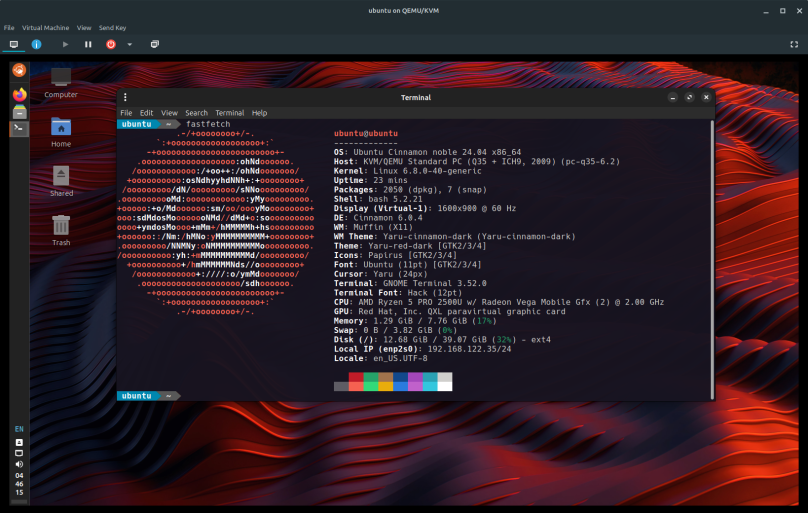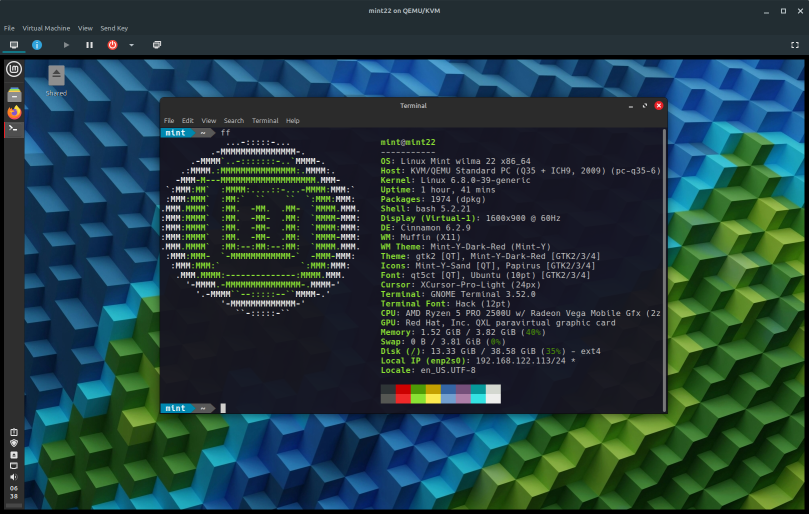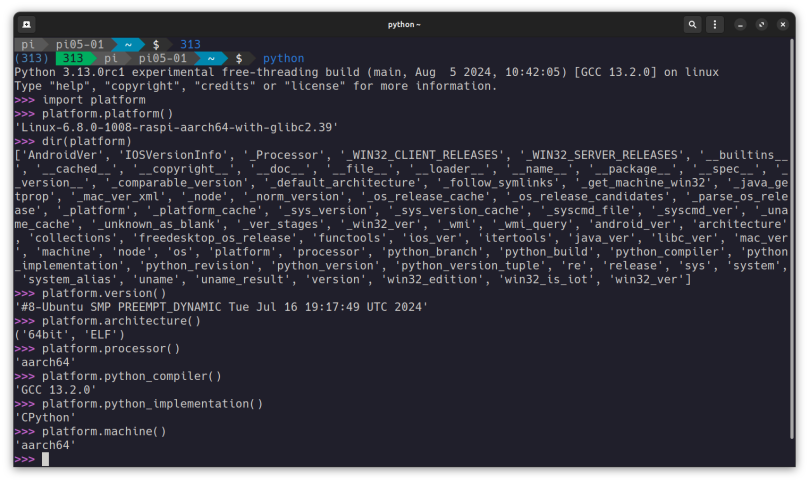
That didn’t take long. Behold Ubuntu 24.04 with the Cinnamon desktop. It’s a flavor/flavour of Ubuntu available from the Ubuntu website. I installed it as a VM hosted on my current Linux Mint system. Ubuntu Cinnamon uses the same version of the desktop that Linux Mint 21.3 currently uses, so there’s absolutely no difference as far as the GUI is concerned. And wonder of wonders, Ubuntu 24.04 no longer has brltty installed at all. As for all the little tweaks I like to add to my systems, it took all of twenty minutes to find and add everything I wanted. Am I satisfied, and more importantly, is this the path I believe I should go down? Maybe.

One of the most powerful tools in my personal software arsenal is QEMU/KVM, which allows me to create Linux virtual machines hosted on my regular computer. Whenever I want to try something out such as a different distribution, or to try to do something I consider a risk with my current system, I spin up a VM sandbox for those purposes. Gone are the days I felt I had to keep separate machines around for that purpose.
I’ve already shown one VM running Ubuntu Cinnamon at the top. Here’s the second VM running Linux Mint 22. That VM started with Linux Mint 22 beta, and I’ve been installing all the updates until today it’s a full Linux Mint 22 final release. It has all the latest tools, kernel, and desktop environment. If we read what fast fetch shows on both, the Cinnamon DE on Ubuntu is version 6.0.4, which is what I currently run on my main desktop. The latest Cinnamon DE on Linux Mint 22 is 6.2.9. It might not seem like a large leap, but it is. The latest Cinnamon DE is as much about refinements as it is new features, and I would love to have it running as my daily driver. But I’ve already written what happened when I tried to install the upgrade from Linux Mint 21.3 to 22.
So, unless a miracle occurs and the Linux Mint team re-enables the ability to upgrade via Update Manager, that means a full installation of a Linux distribution. Which begs the question of: if you’re considering a new installation of Ubuntu Cinnamon, why not do a new install of Linux Mint 22?
Issues to consider. But I’m in no hurry to act.


You must be logged in to post a comment.